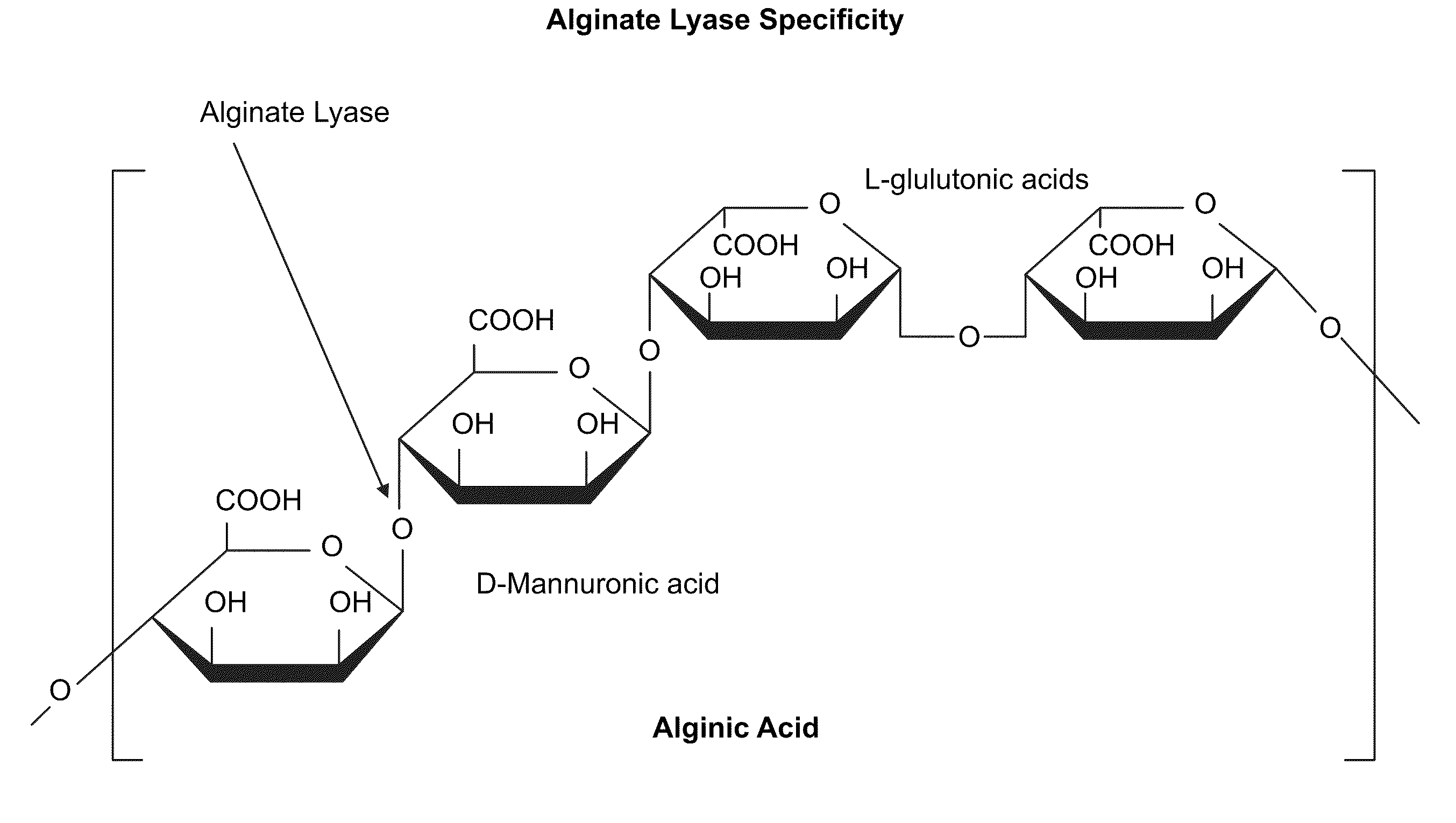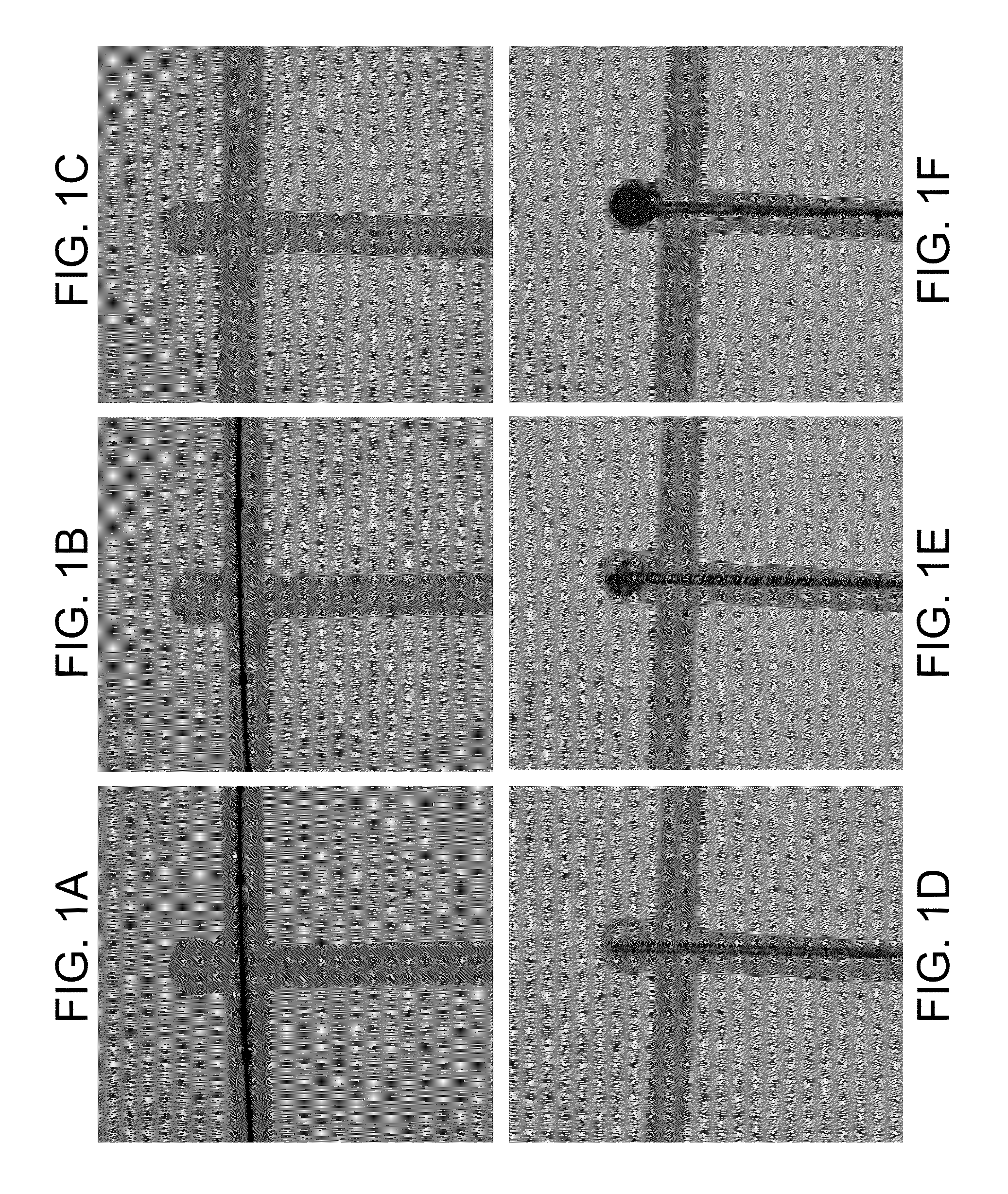Alginate and alginate lyase compositions and methods of use
a technology of alginate and alginate lyase, which is applied in the direction of lyases, prosthesis, extracellular fluid disorder, etc., can solve the problems of significant limitations inherent in the use of liquid embolic agents, parent artery occlusion, catheter adhesion, etc., and achieve the effect of effective wound healing agents
- Summary
- Abstract
- Description
- Claims
- Application Information
AI Technical Summary
Benefits of technology
Problems solved by technology
Method used
Image
Examples
examples
Methods of the Invention
[0330]The results reported herein were obtained using the following Materials and Methods and Experimental Settings:
Purified Alginate Preparation.
Method
[0331]As a first step, Protanal-HF alginate is dissolved to 0.1% in 0.5 mM EDTA, 10 mM HEPES, pH 7.0. Next, the solution is filtered to 0.45 microns to remove particulates. In a separate flask, 4 gm fine mesh activated charcoal per gram alginate is bleached by resuspension to 4% (w / v) in 0.1 M sodium perchlorate. Following 30 minutes mixing the bleached charcoal is washed by centrifugation (5 min @ 500×g) twice with water, 4× with ethanol, 4× with water. The supernatants are then discarded.
[0332]The bleached activated charcoal slurry is added to the filtered alginate and stirred for 30 min to adsorb organic contaminants. The supernatant is filtered to 0.22 micron; then filtered at 0.1 micron. 10.2 ml 10% MgCl2.5H2O per liter is added to the filtrate and it is mixed thoroughly. 3.8 ml 34% CaCl2.2H2O is graduall...
experiment # 1
Experiment #1—In the first rabbit, vascular access was obtained by inserting a 5F sheath in the right common carotid artery (CCA). The alginate based biomaterial was injected in the distal abdominal aorta and pelvic arteries, followed by injection of Alginate lyase composition. This experiment demonstrates the dissolvability of the alginate based biomaterial in vivo.
experiment # 2
Experiment #2—In the second rabbit, a wide neck aneurysm was created following a standardized protocol (26). Briefly, a 5F arterial sheath was inserted in the right common carotid artery (CCA) through surgical access. The proximal portion of the CCA was isolated from the circulation by inflating a balloon across its origin, and exposed to a solution of elastase. The balloon and sheath were then removed, the CCA ligated, and the surgical wound sutured. The non-surviving experiment was conducted one month after aneurysm creation. The wide neck aneurysm was filled with the alginate based biomaterial in the absence of aneurysmal neck protection (e.g., no stent or balloon), in order to simulate a clinical complication secondary to embolic material migration. The aneurysm was embolized using a coaxial delivery system: A 2.8F microcatheter (Hypertransit, Cordis Neurovascular, Miami) was introduced into a straight-tip 5F diagnostic catheter (Cook, Bloomington, Ind.), previously placed into ...
PUM
| Property | Measurement | Unit |
|---|---|---|
| Composition | aaaaa | aaaaa |
Abstract
Description
Claims
Application Information
 Login to View More
Login to View More - R&D
- Intellectual Property
- Life Sciences
- Materials
- Tech Scout
- Unparalleled Data Quality
- Higher Quality Content
- 60% Fewer Hallucinations
Browse by: Latest US Patents, China's latest patents, Technical Efficacy Thesaurus, Application Domain, Technology Topic, Popular Technical Reports.
© 2025 PatSnap. All rights reserved.Legal|Privacy policy|Modern Slavery Act Transparency Statement|Sitemap|About US| Contact US: help@patsnap.com



